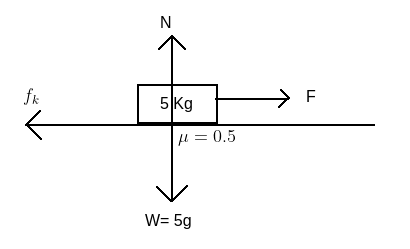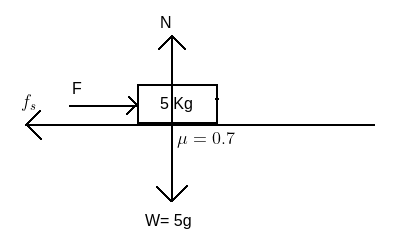How Does Friction Impact Our Daily Life?
Walking on the floor, writing with a pen, braking a car, lifting an object – in fact, most of our most mundane actions are impossible without friction.
This Story also Contains
- Reduced Friction
- What Friction Is Not
- Types Of Friction
- Coefficient Of Friction
- Friction At The Atomic Level

“Friction” is the force that opposes relative motion or the tendency of objects to slide or roll across a surface. It is a force that is encountered in everyday life and it is present whenever two surfaces come into contact and rub against each other.
Friction causes the below-mentioned actions:
Movement: Friction allows us to move around without slipping or sliding. Without it, we would not be able to walk or even sit on a chair without sliding off.
Stopping of movement: It also allows us to stop moving but applying a force that opposes our motion. A car can stop because the friction between the wheels and the brake pad helps to slow down the vehicle. If it didn’t, the car would keep rolling.
Creating heat: Friction also generates heat. It is used to start fires and also to heat up certain materials for manufacturing processes.
Reduced Friction
What happens when friction is reduced?
Banana peel accident: This one is a classic. You must have seen it as a part of innumerable comedy and cartoon scripts. The banana peel’s smooth surface offers little friction and when a person steps on it, they lose their balance and fall.
Friction burns: Friction can also cause burns. The rubbing of skin against a rough surface with enough force to generate heat can leave burns. This is how “rope burns” and “carpet burns” are caused. Drag across a carpet too many times and it’ll leave burn-like injuries.
What Friction Is Not
Here’s what friction is not and cannot do:
A force that always acts in the opposite direction to motion: Friction can act in any direction, depending on the surface roughness and the type of motion involved.
Friction is not always bad as it gets in the way: It helps us walk and drive and it helps us grip objects.
Friction is caused by surface roughness: While surface roughness can contribute to friction, it is not the only factor that determines the amount of friction between two surfaces. The type of material, the force being applied, and the temperature of the surfaces are all factors.
Friction can be completely eliminated: It is not possible to completely eliminate friction. But friction can be reduced in several ways:
Use lubricants: Lubricants such as oil, grease, or dry lubricants can be applied to the surfaces to reduce the amount of friction between them.
Use low-friction materials: Some materials, such as Teflon or certain types of plastic, have a low coefficient of friction and can be used to reduce the amount of friction between two surfaces..
Reduce the pressure or load on the surfaces: The greater the pressure or load on the surfaces, the more friction there will be. Reducing the pressure or load can help to reduce the amount of friction.
Types Of Friction
These are the types of friction:
Kinetic Friction
It is the type of friction that exists between two objects that are in motion relative to each other. It acts to resist the motion of the objects and can be represented by the following equation:
fk=μk* N
Where fk is the kinetic friction force, μk is the coefficient of kinetic friction, and N is the normal force acting on the object that is equal to weight (W).
The coefficient of kinetic friction (μk) represents the amount of kinetic friction that exists between two particular materials. It is usually a value between 0 and 1, with higher values representing greater amounts of kinetic friction.
The normal force (N) is the force exerted perpendicular to the surfaces of the two objects that are in contact with each other. It is equal to the weight of the object if the object is resting on a horizontal surface.
Here is a diagram showing an object moving along a surface with kinetic friction:

In this diagram, the object is being pulled to the right with a force F. The kinetic friction force fk acts in the opposite direction to the motion of the object, trying to resist its motion. The normal force N is exerted perpendicular to the surface and is equal to the weight of the object.
To find the magnitude of the kinetic friction force, we can use the equation above:
fk=μk* N
=μk* W
= (0.5) * (50 N)
= 25 N
In this example, the coefficient of kinetic friction between the object and the surface is 0.5 and the weight of the object is 50 N. The kinetic friction force is 25 N, which acts in the opposite direction to the applied force F.
Here are a few examples of kinetic friction in everyday life:
Walking or running on a surface: When you walk or run, your shoes exert a force on the ground as you push off with each step. The ground exerts a force of kinetic friction on your shoes in the opposite direction, which helps to slow down your motion and keeps you from slipping.
Skateboarding or rollerblading: When you skateboard or rollerblade, the wheels of your skateboard or rollerblades exert a force on the ground as you push off with each stride. The ground exerts a force of kinetic friction on the wheels in the opposite direction, which helps to slow down your motion and keep you from slipping.
Driving a car: When you drive a car, the tires exert a force on the ground as you accelerate or brake. The ground exerts a force of kinetic friction on the tires in the opposite direction, which helps to slow down or speed up the car as needed.
Static Friction
It is the type of friction that exists between two objects that are not moving relative to each other. It acts to prevent the two objects from moving and can be represented by the following equation:
fs=μs* N
Where fs is the static friction force, μs is the coefficient of static friction, and N is the normal force acting on the objects.
The normal force (N) is the force exerted perpendicular to the surfaces of the two objects that are in contact with each other. It is equal to the weight of the object if the object is resting on a horizontal surface.
Below diagram showing an object resting on a surface with static friction:

In this diagram, the object is being pushed to the right with a force F applied. The static friction force fs acts in the opposite direction to the applied force F, trying to prevent the object from moving. The normal force N is exerted perpendicular to the surface and is equal to the weight of the object.
To find the magnitude of the static friction force, we can use the equation above:
fs=μs* N
= μs* W
= (0.7) * (50 N)
= 35 N
In this example, the coefficient of static friction between the object and the surface is 0.7 and the weight of the object is 50 N. The static friction force is 35 N, which acts in the opposite direction to the applied force F.
If the applied force F exceeds the maximum static friction force, the object will begin to move and kinetic friction will take over. The kinetic friction force will be less than the static friction force because the coefficient of kinetic friction (μk) is usually less than the coefficient of static friction (μs).
Here are some real-life examples of the work of static friction.
Pushing a heavy object: When you push a heavy object, such as a couch or a fridge, the object exerts a static friction force on the floor in the opposite direction to your push. It keeps the object from moving until you apply enough force to overcome it.
Holding an object in your hand: When you hold an object in your hand, your hand exerts a static friction force on the object in the opposite direction to the force of gravity. This helps to keep the object from falling out of your hand until you apply enough force to overcome the static friction force.
Sitting on a chair: When you sit on a chair, the chair exerts a static friction force on your body in the opposite direction to the force of gravity. This helps to keep you from sliding off the chair until you apply enough force to overcome the static friction force to shift in the chair, lean forward or cross your legs.
Writing with a pen: When you write with a pen, the pen exerts a static friction force on the paper in the opposite direction to the force you apply. This helps to keep the pen from slipping on the paper and allows you to control the movement of the pen as you write.
Coefficient Of Friction
Why is the coefficient of friction always between 0 and 1?
The coefficient of friction is a value that represents the amount of friction that exists between two particular materials. It is always a value between 0 and 1 because it is a ratio of the friction force to the normal force acting on the objects.
If the coefficient of friction is 0, there is no friction between the two materials and they will slide freely past each other. If the coefficient of friction is 1, the friction force is equal to the normal force and the two materials will be stuck together and will not slide past each other.
The coefficient of friction can vary depending on the materials being used, the roughness of their surfaces, the temperature, humidity, and other factors.
It is important to note that the coefficient of friction is not a constant value and can change depending on the specific circumstances. For example, the coefficient of friction between two materials may be different when they are dry compared to when they are wet or lubricated.
Friction At The Atomic Level
At the atomic level, friction is the result of the interaction between the atoms or molecules of two surfaces that are in contact. When two surfaces are in contact, the atoms or molecules at the interface between the two surfaces will interact with each other through a variety of forces, including
Van der Waals forces
Coulomb forces
London forces.
Van der Waals forces are attractive forces that exist between all atoms and molecules. These forces are relatively weak but can play a significant role in the friction between two surfaces.
Coulomb forces are attractive or repulsive forces that exist between charged particles. These forces can be significant in the friction between two surfaces if one or both surfaces are charged or if the atoms or molecules at the interface are ionically bonded.
London forces are attractive forces that exist between all atoms and molecules. These forces are very weak, but they can play a role in the friction between two surfaces.
The magnitude of the friction between two surfaces is determined by the strength of the forces between the atoms or molecules at the interface, as well as the nature of the surfaces and the relative motion between them. As the relative motion between the surfaces increases, the frictional force will also increase, as the atoms or molecules at the interface will be subjected to greater forces due to the increased kinetic energy of the surfaces.
Applications for Admissions are open.
As per latest syllabus. Physics formulas, equations, & laws of class 11 & 12th chapters
JEE Main Important Chemistry formulas
Get nowAs per latest syllabus. Chemistry formulas, equations, & laws of class 11 & 12th chapters
JEE Main high scoring chapters and topics
Get nowAs per latest 2024 syllabus. Study 40% syllabus and score upto 100% marks in JEE
JEE Main Important Mathematics Formulas
Get nowAs per latest syllabus. Maths formulas, equations, & theorems of class 11 & 12th chapters
